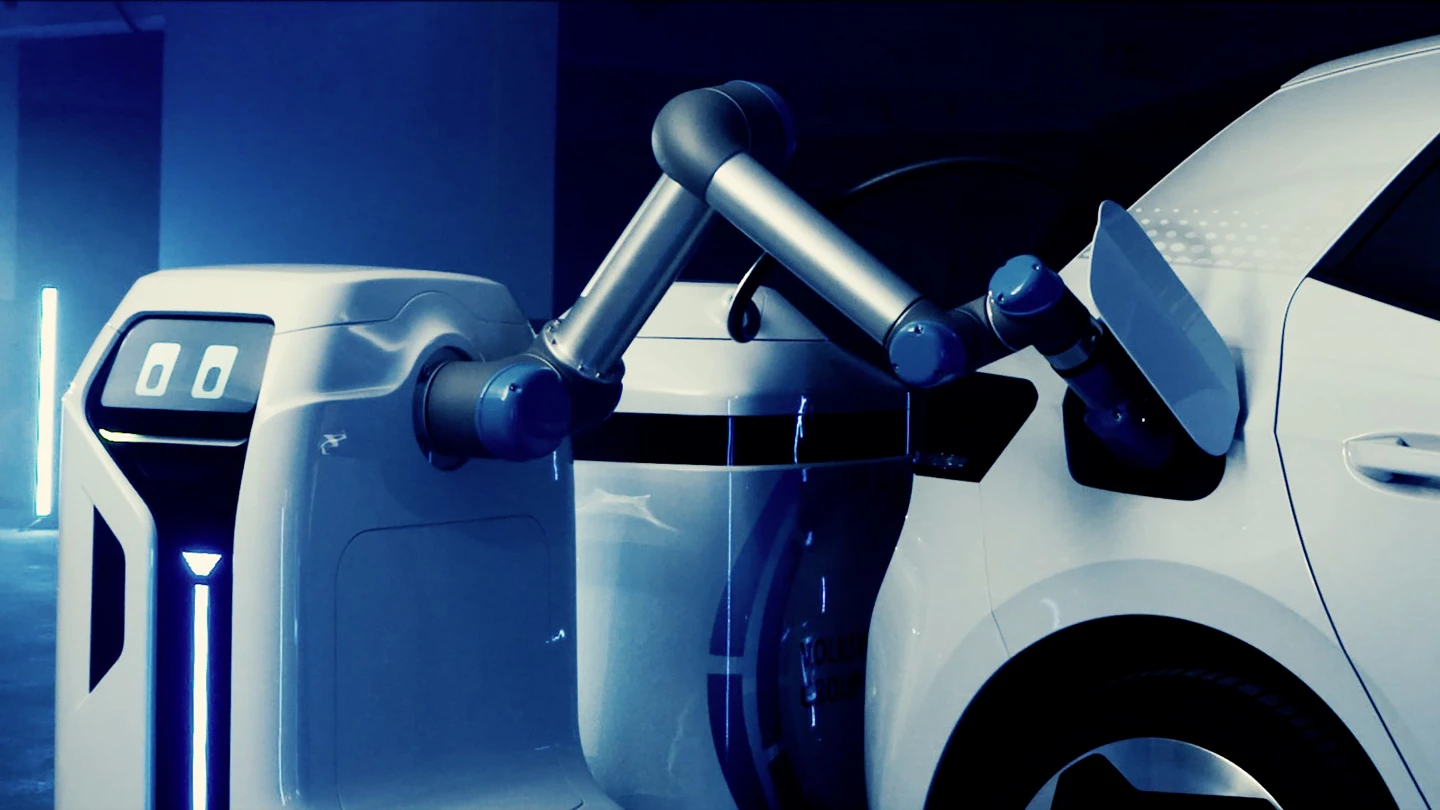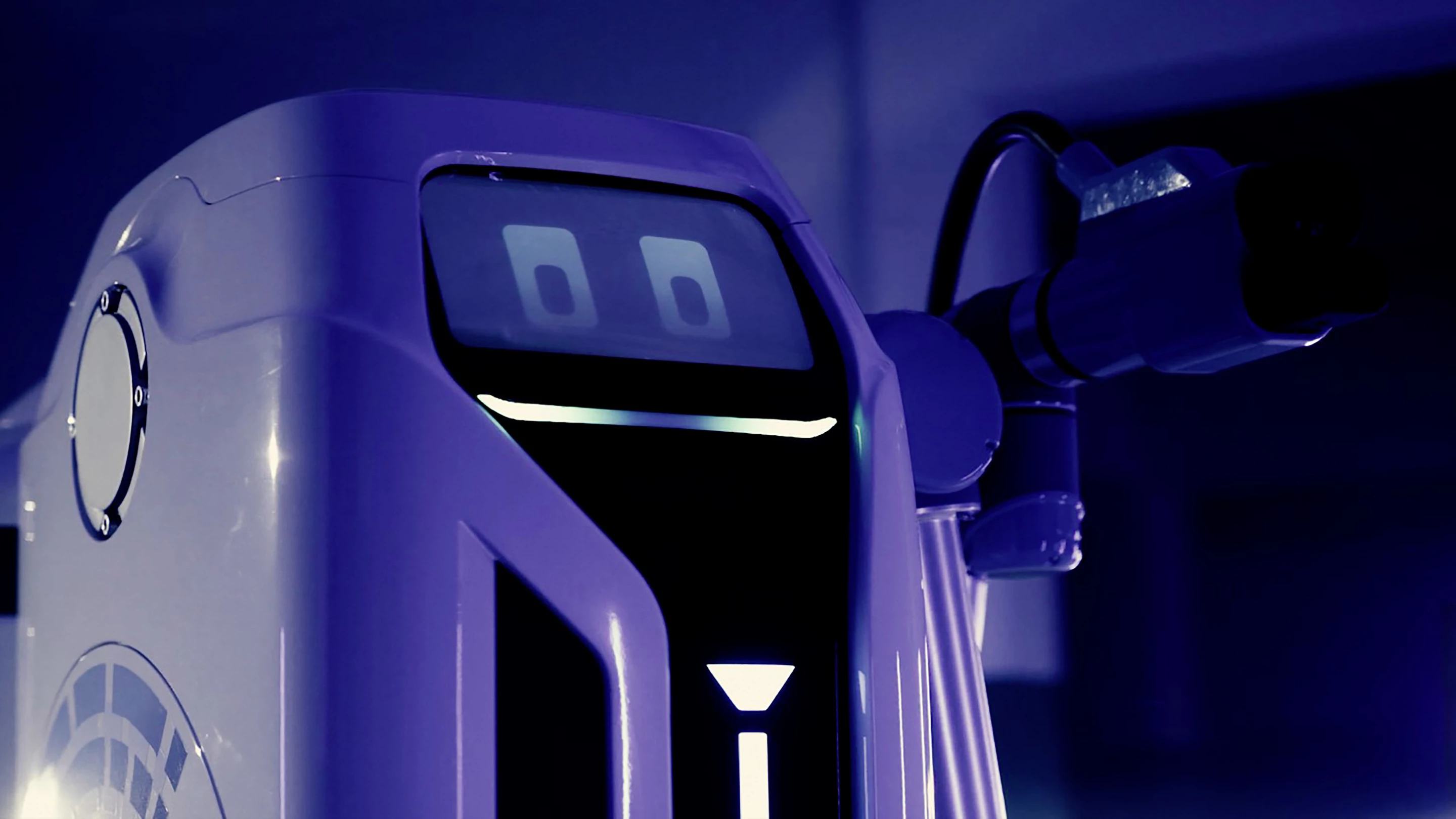'Tis the season … for Volkswagen to bring us up to speed on its efforts to make charging electric vehicles a completely autonomous operation. A year ago, almost to the day, the automaker unveiled its mobile charging robot concept, and now, having spent the the past 12 months making the concept a reality, it has given us the first glimpse of the robot in prototype form.
To recap, VW's mobile charging concept consists of two separate but complementary modules; a "mobile energy device" trailer, which is essentially a big battery on wheels, complete with charger; and a mobile robot that can tow the trailer unit to a vehicle, plug in the charger, and leave the trailer there while it tends to other vehicles or goes back to base to await further orders. Once charging is complete, the robot retrieves the trailer and takes it back the charging station to be topped up.
The whole process, which is started either via an app or by Car-to-X communication, is completely autonomous.
The concept followed on from an all-in-one prototype that VW showed in 2017, but splitting the battery from the hardware and software needed to travel to the desired vehicle, open the charge flap, guide the plug to the charge port, decouple the plug when charging is complete and return to the charging station has obvious advantages in terms of cost reductions.

The system is designed to address one of the main barriers to entry for those considering the purchase of an electric vehicle – a lack of charging infrastructure. Although the number of charging stations around the world continues to rise, integrating them into existing structures such as underground car parks and restricted parking areas can be difficult and expensive.
The charging robot joins VW's flexible quick-charging station in attempting to overcome this problem. Being developed in partnership with Shanghai DU-POWER New Energy Technical Co., Ltd., in an effort to help expand the e-mobility market in China, the flexible quick-charging station is designed to be simple to set up almost anywhere and be moved easily. However, VW says it is working on a "complete DC charging family."
“Setting up an efficient charging infrastructure for the future is a central task that challenges the entire sector," says Thomas Schmall, CEO of Volkswagen Group Components. "We are developing solutions to help avoid costly stand-alone measures. The mobile charging robot and our flexible quick-charging station are just two of these solutions.”
Now that it's reached prototype stage, VW says it will continue further development of the mobile charging robot. Meanwhile, the flexible quick-charging station is scheduled to launch in 2021.
The mobile charging robot concept is demonstrated in the video below.
Source: Volkswagen










